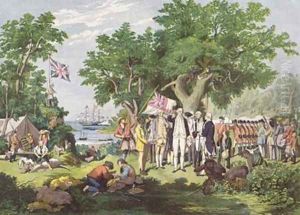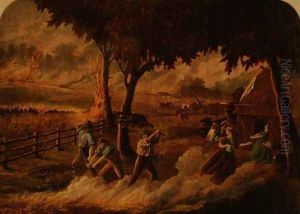Samuel Calvert Paintings
Samuel Calvert was an English-born Australian engraver and artist, recognized for his contribution to the development of graphic arts in Australia. Born in 1828 in Cambridge, England, Calvert came from a family with artistic leanings; his brother Edward Calvert was a notable engraver associated with the English Romantic movement. Samuel, however, would eventually carve his path on the other side of the world.
As a young man, Calvert worked in London, honing his skills as an engraver. In 1848, he decided to emigrate to Australia, settling in Adelaide, South Australia. His arrival coincided with the burgeoning demand for commercial engraving and illustration work, fueled by the growth of newspapers, books, and advertising in the colony.
Moving to Melbourne in the 1850s, during the Victorian gold rush, Calvert's work became even more in demand. He established himself as a prominent wood engraver and illustrator. During this period, he contributed to the illustration and ornamentation of books, periodicals, and ephemeral works. He worked closely with various publications, including 'The Illustrated Australian News,' providing images that captured the dynamic and transformative spirit of the time.
His work ranged from depictions of everyday life to grand scenes of civic progress and the natural environment. Calvert also played a role in documenting significant events in Australian history, such as the exploration of the continent's interior and the development of its cities.
Calvert was not just an engraver; he also engaged in painting and taught art. His influence extended to his support for the arts community in Melbourne and his role in the establishment of institutions such as the Victorian Academy of Arts.
Samuel Calvert passed away in 1913, leaving behind a legacy as a pivotal figure in the Australian art scene of the 19th century. His engravings and illustrations remain a valuable record of the period, offering insights into the life and times of colonial Australia.

